Is the Oban whisky distillery worth a visit?
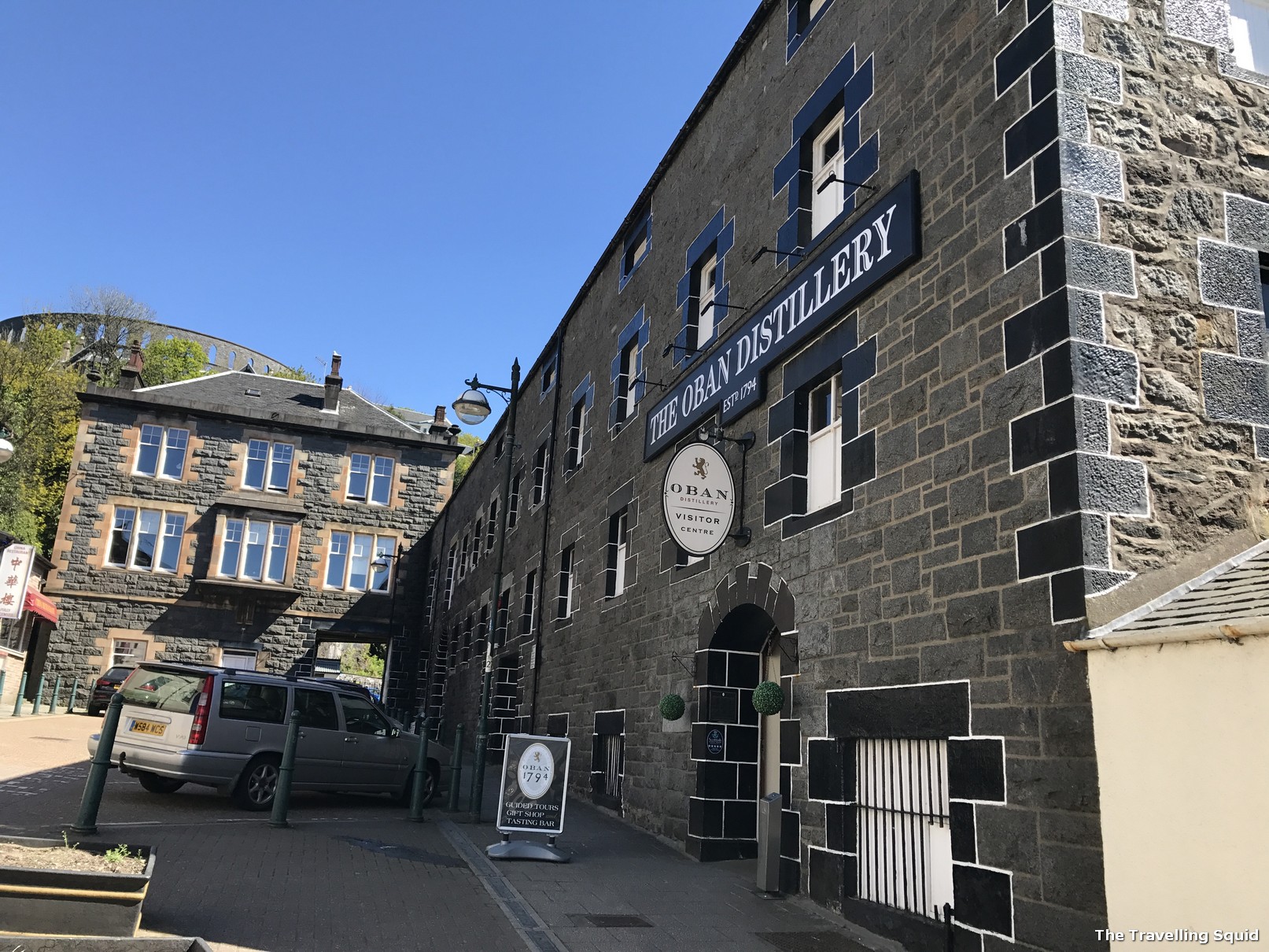
Is the Oban whisky distillery worth a visit? I would say, a most definite yes. It was the first Scottish distillery we visited in Scotland, and probably one of the most accessible, given its location in the middle of town. It is a five-minute walk from the seafront, and a 15 minute stroll from The Ranald Hotel in Oban.
That said, the Oban distillery is under the management of Diageo, a British alcohol multinational company. If you have visited other whisky distilleries under the management of Diageo, such as Talisker, you should go with the expectation that the guided tour will be similar. Reason being, we visited the Talisker Distillery in Isle of Skye and the tour was almost identical. The tasting notes they recommended, such as the orange, sea salt, honey flavours in whisky was similar, and so was their equipment, such as the copper stills for distillation and the spirit safes. The difference was that Talisker has three copper stills compared to Oban’s two. Oban’s production is much smaller, which is why the whisky is harder to find, especially in international markets.

Reservation
As it was our first time visiting a whisky distillery, we thought an advanced booking was required (which was not the case). We made a phone call through the hotline, and the staff took our credit card details through the phone (which is a tad unnerving). Nonetheless, it was fine, and when we got there with an hour to spare. Our tour was booked and paid for and our credit card was not charged for anything else thankfully.
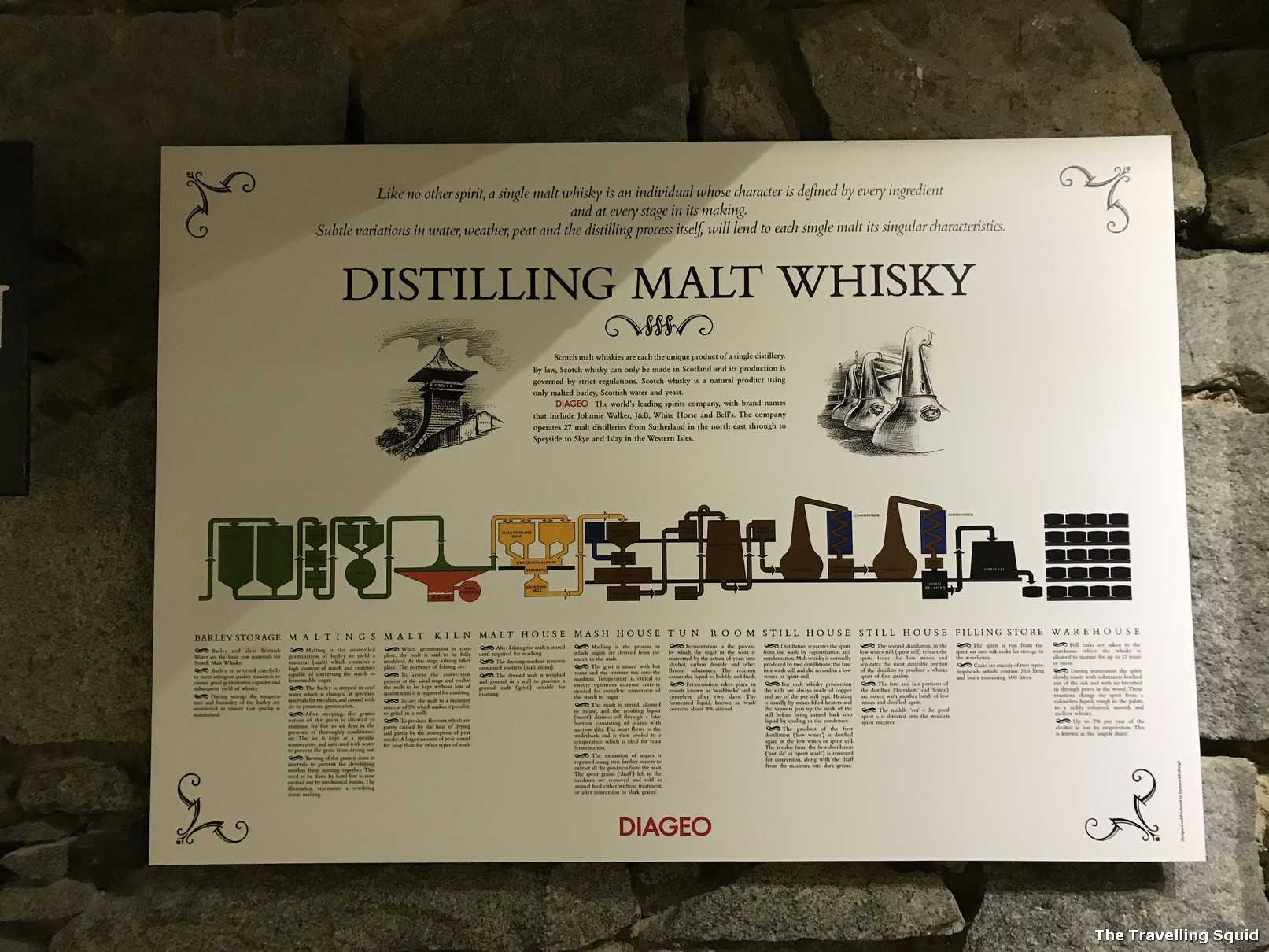
Once you have booked the tour at a specific time, you cannot change it. My recommendation would be just to go down to the distillery and made a reservation an hour in advance, and maybe go for lunch near a seafood shack by the seaside. The tour cost £10 per person, and you get a £5 voucher off which you can use to buy whisky in 750ml bottles. In this case, the Oban whisky was the most value-for-money. It is possibly the most affordable to buy whiskies at the distiller. I saw the bottles at a gift shop at Loch Ness and it was 1.5 times the price.

The Tour
Of course, not all parts of the whisky making-process can be seen on the tour. I have highlighted key steps of the whisky-making process, and what we saw as part of it. With credits to Wikipedia for the information.
Step 1: Malting
Barley, yeast and water are the only ingredients required in the production of single malt whisky. Water is added to the barley to promote germination. The barley used to make the whisky is “malted” by soaking the grain in water for two to three days and allowing it to germinate. This process releases enzymes, which convert unfermentable starch (which cannot be fermented by yeast) to fermentable sugars.
The germination is halted (by heating) after three to five days, when the optimum amount of starch has been converted to fermentable sugars. The method for drying the germinated barley is by heating it with hot air. In most cases, some level of smoke from a peat-heated fire is introduced to the kiln to add phenols, a smoky aroma and flavour to the whisky. Some of the more intensely smoky malts have phenol levels between 25 and 50 parts per million (ppm). Islay malts have a reputation for being the most peaty. More subtle malts can have phenol levels of around 2–3 ppm.

What was on the tour: We didn’t see the malting process, but our guide Wendy introduced the barley used. It’s a traditional way of doing it, where the barley is placed through a wooden box and given a shake. That way, the barley is sifted through such that the husks, grits and flour are obtain, and added on in exact quantities (see Step 2).
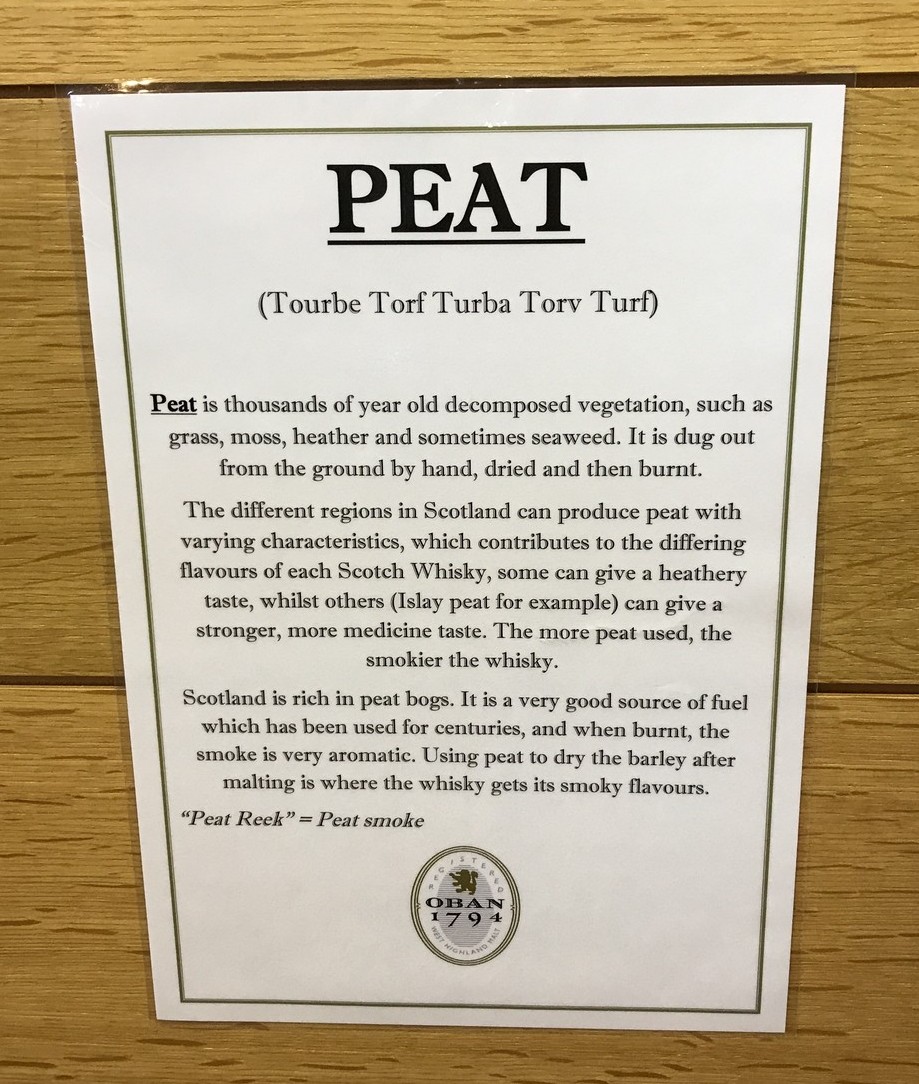
Wendy also shows us what peat is like, and you get a chance to sniff at it. It smells of the earth, and was used as a fuel source in the past. Scotland is blessed with resources perfect for making whisky. Natural fresh water from the lochs, peat for a smoky whisky, and a dry climate for ageing them.

We were introduced to the four main taste profiles of single malt whiskies – honey, sea salt, smoke and orange peel. Our guide said that Oban whiskies tend to have a sea salt flavor, given their location near the sea; though I’ve tried it and didn’t think so. The most clear taste of the Oban was honey, and it was very balanced and relatively smooth for a single malt.
Step 2: Mashing
The malt is milled into a coarse flour (grist) which is made of three substances: (1) Husks (70%); (2) Grits (20%); and Flour (10%); to which three courses of hot water are added to extract the sugars.
The extraction is done in a large kettle (usually made of stainless steel) called a mash tun. At first, the hot water dissolves the sugars (maltose) and enzymes (diastase) in the grist. Then the enzymes act on the starch left over from the malting stage, continuing the conversion to sugar, and producing a sugary liquid called wort. Typically, each batch of grist is mashed three times or so to extract all the fermentable sugars. The first water is injected at approximately 60 °C, the second portion at approximately 72 °C and the third and final portion at approximately 88 °C. The wort from the first two water courses is drained into “washback” vessels for further processing, whereas the third course is retained as the first charge in the next batch.
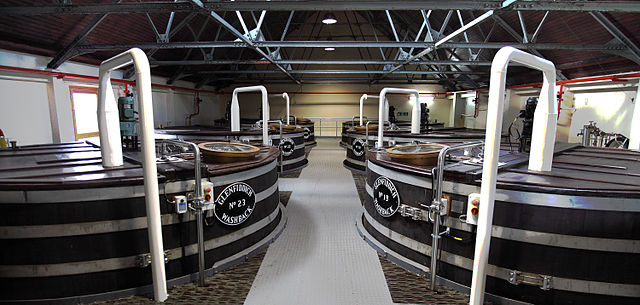
What was on the tour: We saw the mash tun where the barley is boiled in, and the washback. In the Oban distillery, they used a mixed of wooden and stainless steel washbacks. The depth of the washbacks go beyond the floor as plenty of water is used at varying temperatures. There is a smell of alcohol which permeates the air. It’s not the most pleasant of all smells and if you’re sensitive, be prepared. Try not to wear heels as there are gaps in the flooring.
Step 3: Distillation
The wash is then distilled. The wash is heated, boiling off the alcohol, which has a lower boiling point than water; the vapour is collected and cooled to condense it back into a liquid form.
The initial distilled spirit produced by a pot still, known as low wine has an alcohol content of about 20 to 40%. The low wines are then pumped into a second still, known as the spirit still, and distilled a second (and sometimes a third) time. The final spirit, called “new make spirit”, generally has an alcohol content of 60 to 70%.
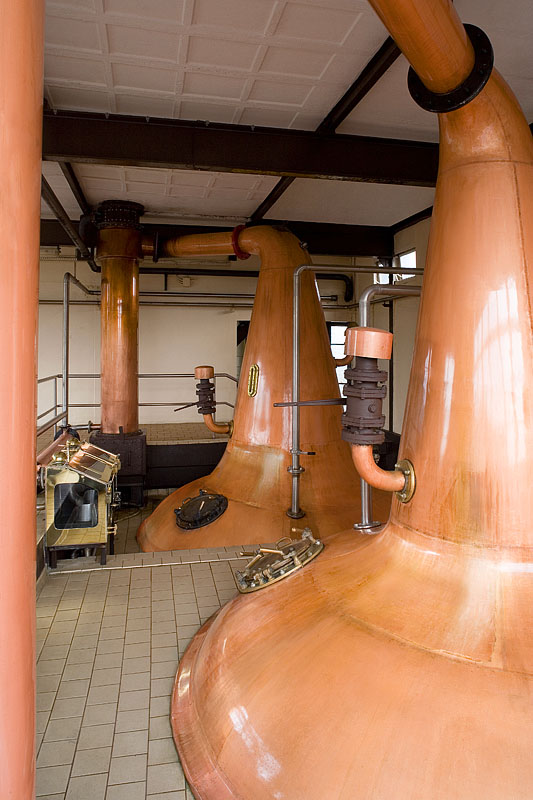
Step 4: Maturation
The unaged whisky, is then placed in oak casks to mature. Oban uses casks from bourbon manufacturers in Americas. The whisky continues to develop and change as it spends time in the wood, and maturation periods of twenty years or more are not uncommon. During the time it spends in the wood, a significant percentage of each cask’s content will evaporate. The lost product is known as the angel’s share (what an apt term indeed!).
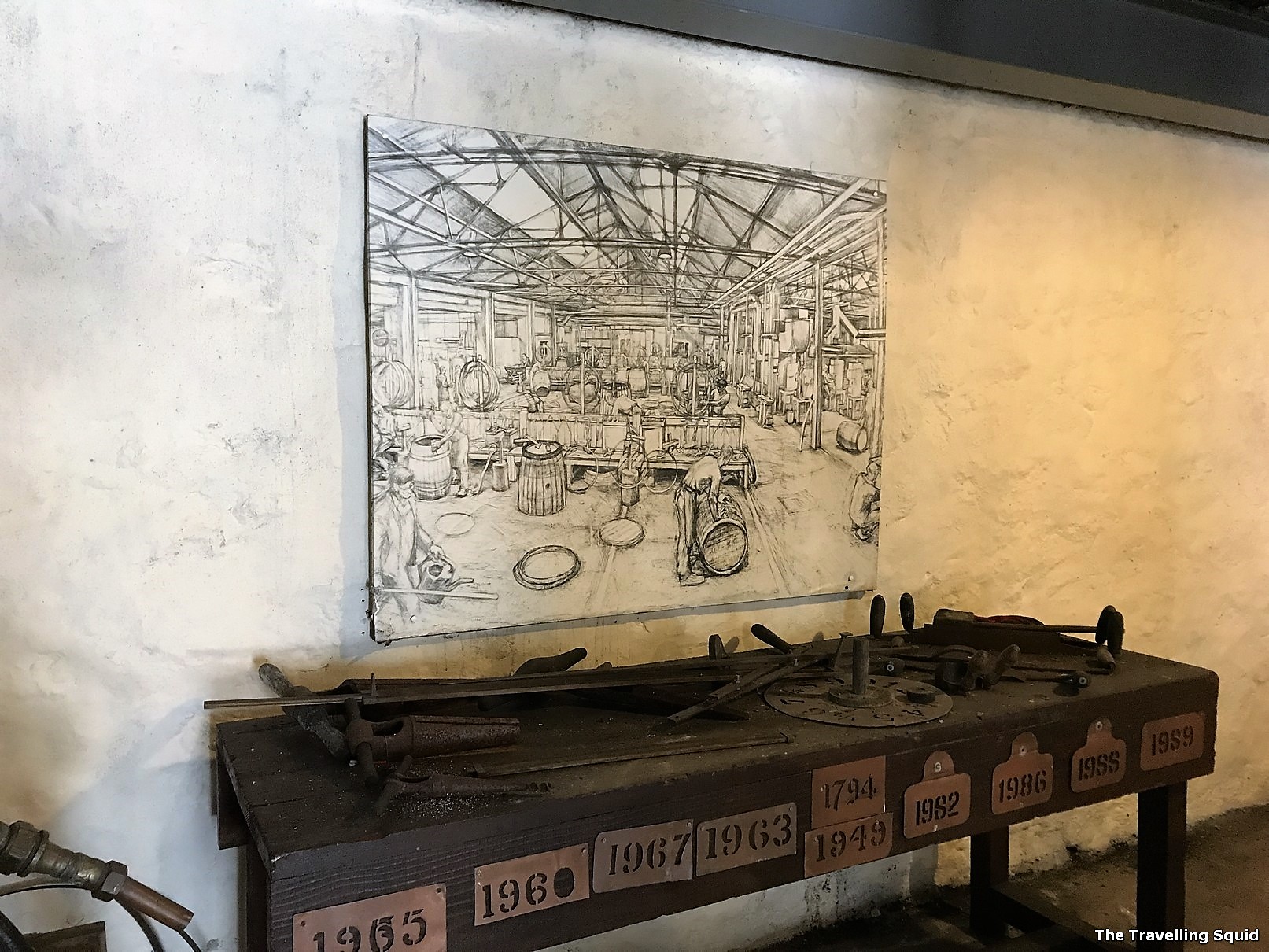
What was on the tour: We were brought to a small part of the warehouse, where the oak barrels were stored. It was cold and dry in there. The highlight of the tour was when we were given a chance to taste a drop of relatively young whisky (alcohol content 50%) – it might have been in the barrel for about 8 years, vs the 14 years it was supposed to be kept in the barrel. It was relatively colourless when we tasted it. That was a really great experience because it’s not common to taste what immature whisky is, and we didn’t get that during the Talisker tour.
Lastly, tasting!

Finally we were brought to a counter where we got to taste the Oban 14. There was a chart on the taste profiles, which was helpful in comparing Oban with that of other whiskies.
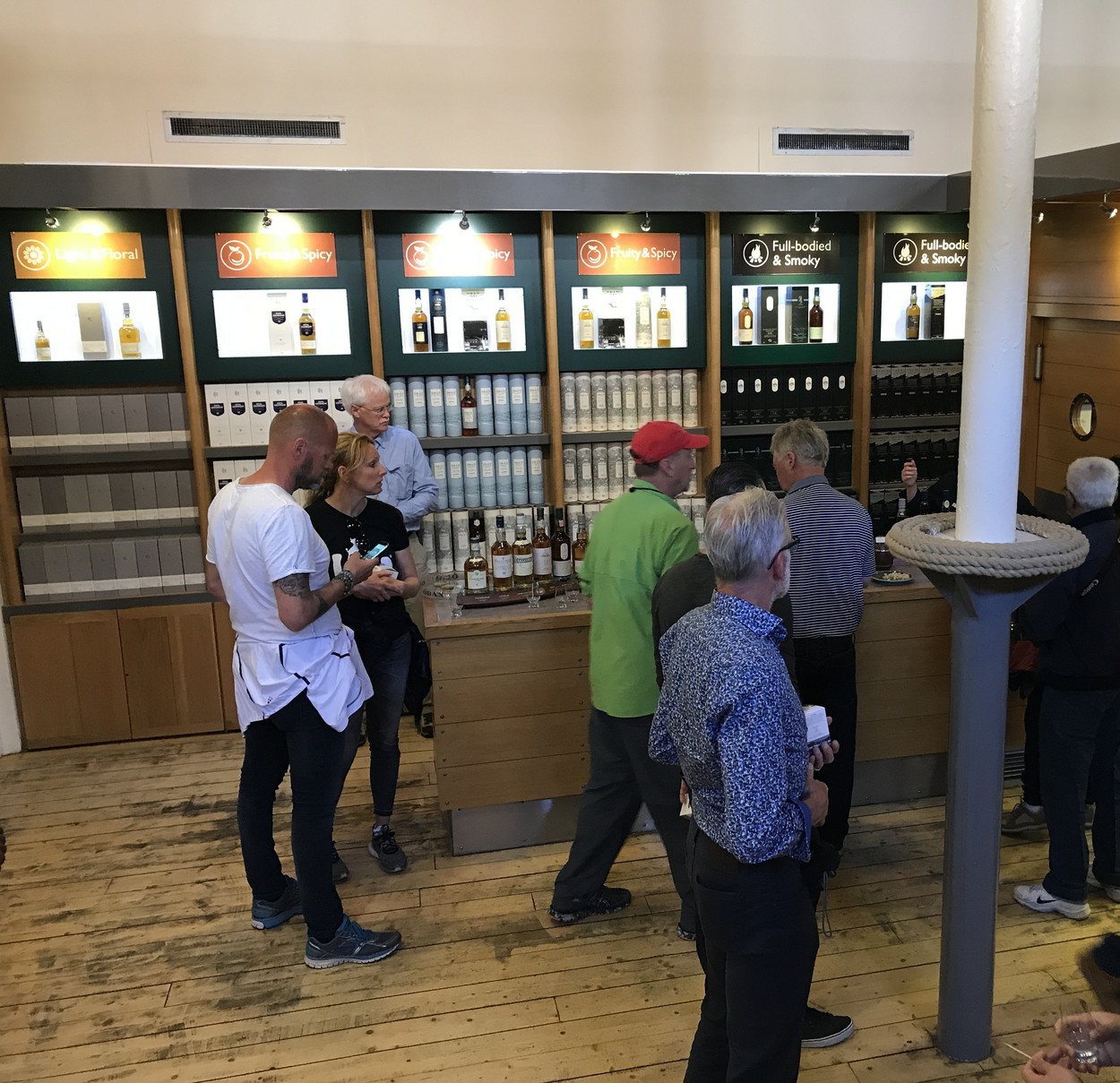
We loved the whisky so much that after the tour, we sat down at Oban’s little bar for a wee dram or two. When we exited, it felt good basking in the summer sunshine at 5pm with a warm and fuzzy feeling all over you.
After the guided tour, we visited the whisky bar as a wee dram was not enough. Well, essentially to dry the other types of whisky which were on sale.
Oban’s whisky bar
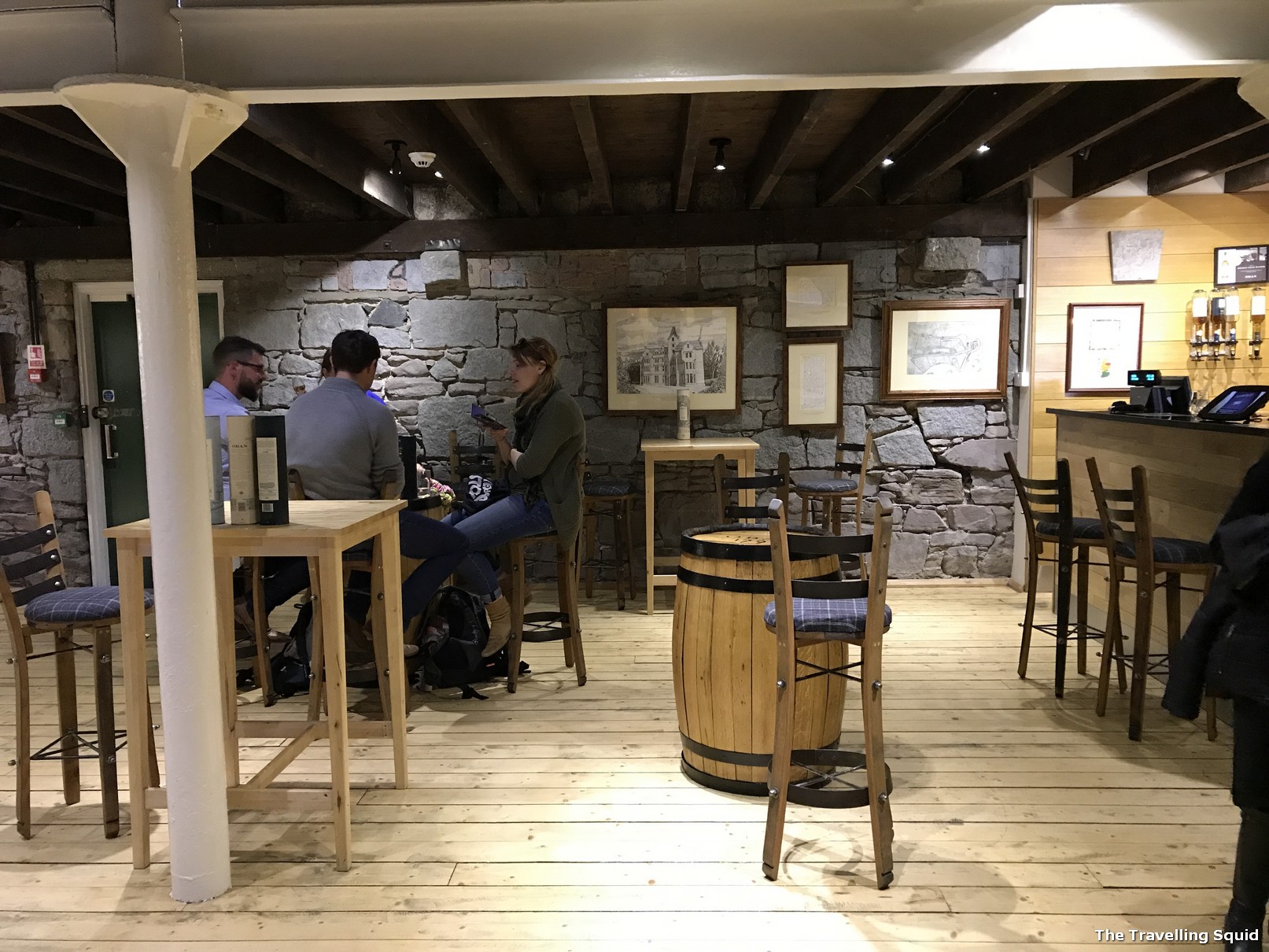
I highly recommend that you head down to Oban’s very own whisky bar for a tasting to try the other whiskies they have, such as Oban’s Little Bay if you’re thinking of buying some bottles back.
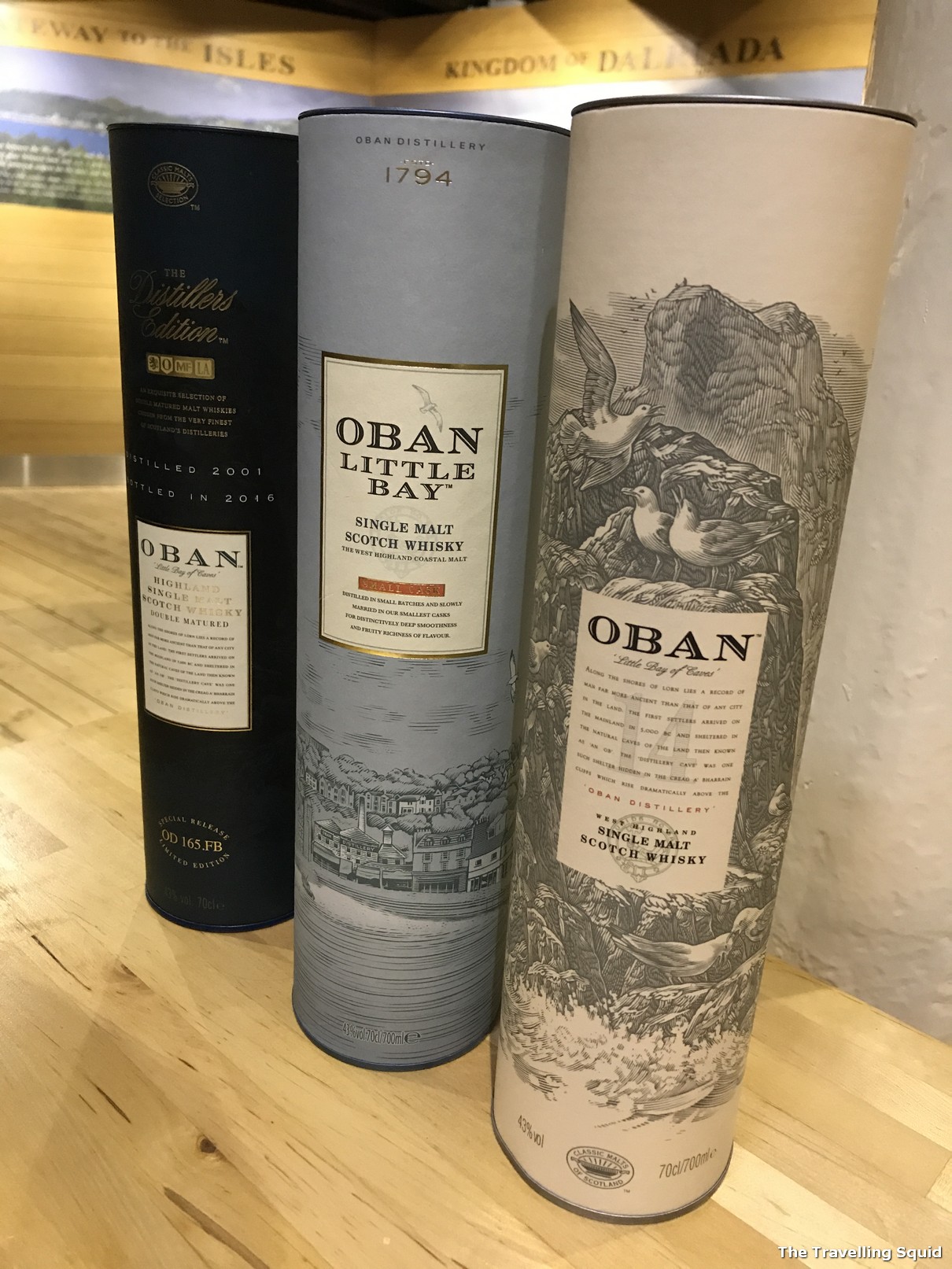
It was £4 for a dram. I personally preferred the Oban 14, as the Little Bay had a spicier note to it. We also tried the higher range of whisky – if I’m not mistakened it was the distiller’s reserve. It was £7 for a dram, but was really smooth and delicious.

The Travelling Squid’s Take
My biggest takeaway from the tour was that it is possible to sip a wee dram, at any time of the day. It goes with any meal – lunch, dinner or even just a casual drinking session. 🙂 And in Scotland, it was the perfect place to be having a dram of single malt right at 5pm in the afternoon.
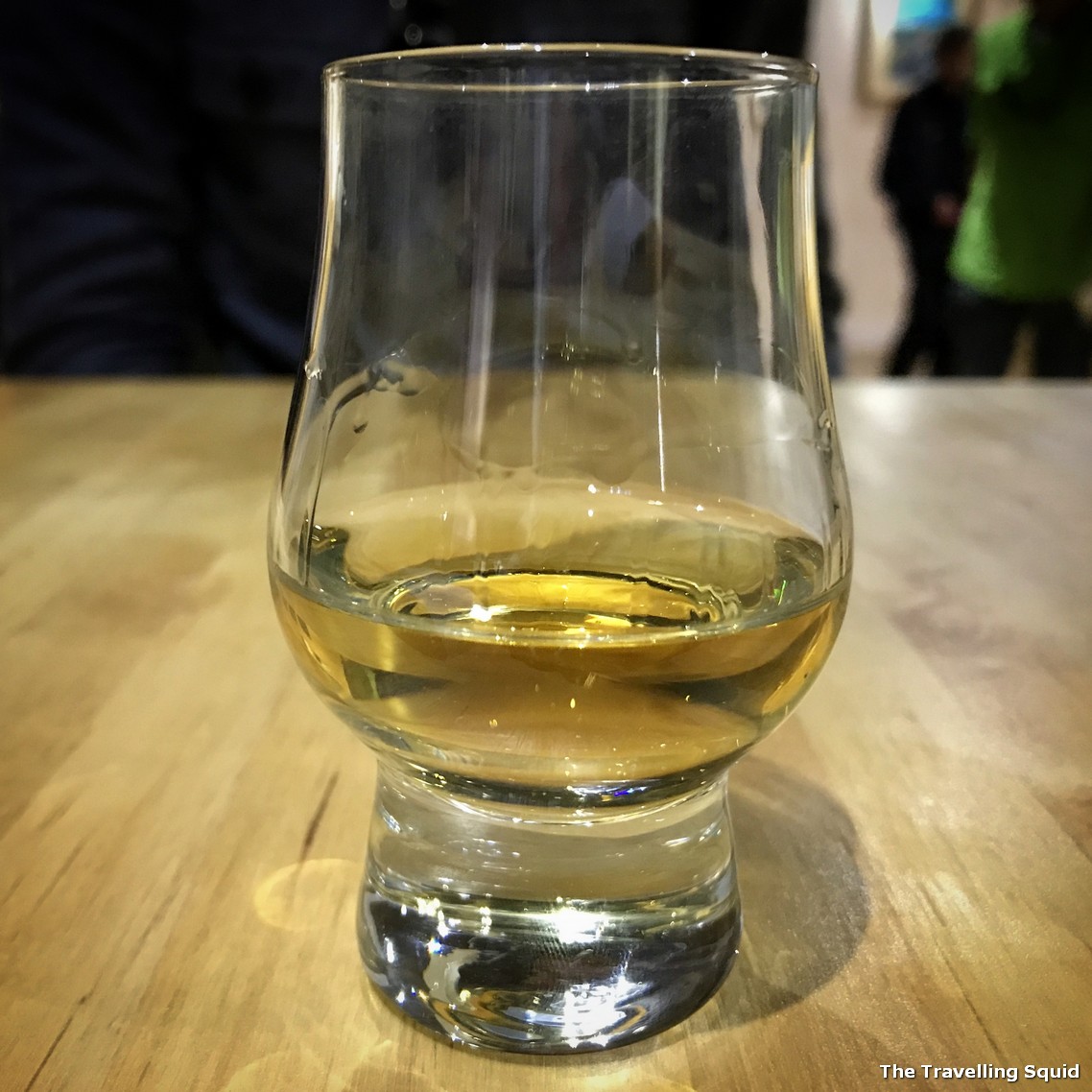
Hic!
If you’re considering visiting both Oban and Talisker distilleries, watch this space in the next couple of days, for our recommendation.

Leave a Reply